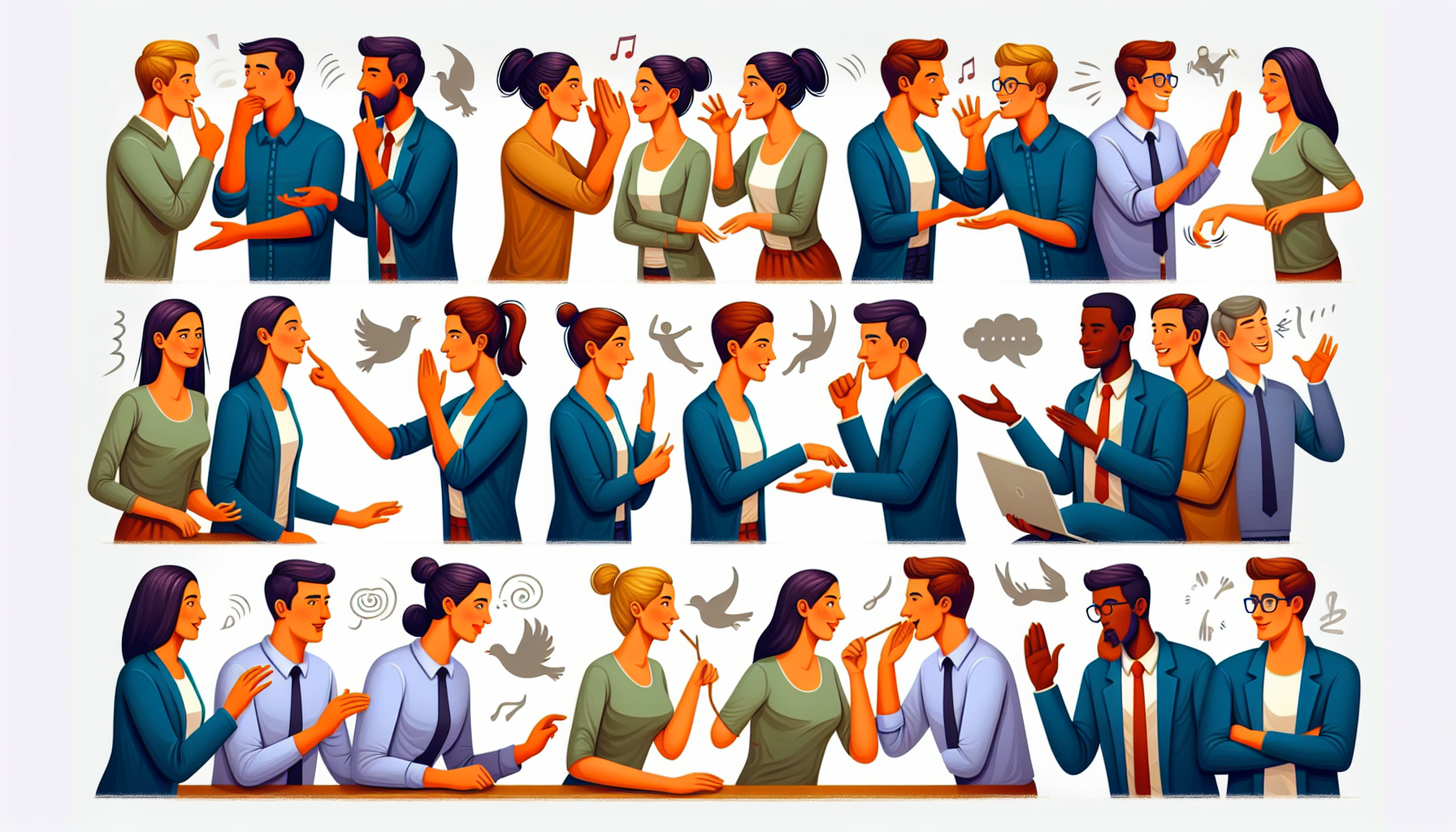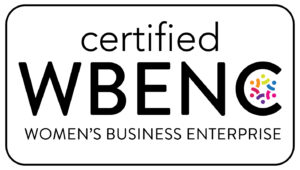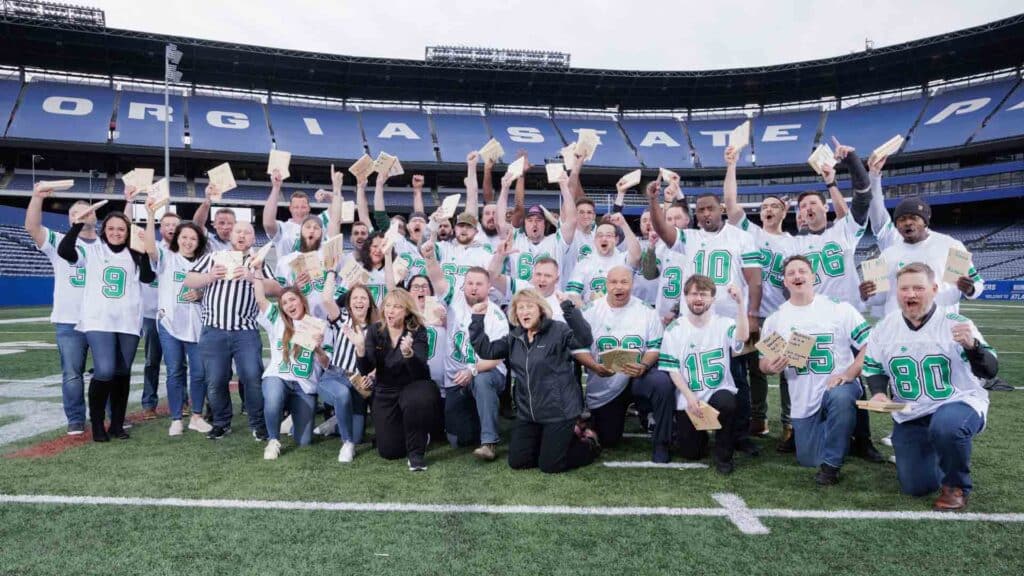Pressed for time but need to strengthen your team? Learn about “team building quick activity” options that can be squeezed into any busy schedule to immediately enhance communication and camaraderie. Expect to find practical, rapid-fire exercises that unite teams — and get straight to the action.
Key Takeaways
Quick team building activities can enhance communication, boost morale, and energize teams, benefiting both new hires and existing members, with the potential to transform team dynamics in minimal time.
Creative challenges and problem-solving activities help bolster innovative thinking and strategic planning within teams, while competitive and collaborative games foster a spirit of unity and shared accomplishment.
Integrating quick, fun, and reflective team building exercises, whether in-person or virtual, can significantly improve empathy, trust, and rapport among team members, aligning them with the organization’s core values.
Unleashing Team Potential with Swift Activities

In today’s fast-paced business climate, there’s a growing demand for quick team building activities that deliver results without the luxury of extended time frames. These swift exercises are not just about fun and games; they’re a critical tool for enhancing communication skills, boosting morale, and fostering a cohesive team environment. Tailored to bridge gaps among new hires and polish the proficiency of existing team members, these activities are the linchpin for a harmonious and effective workforce.
The beauty of quick team building activities lies in their ability to transform and energize team dynamics with minimal disruption to the workday. Whether it’s the ‘Celebrity Party’ game, where guessing celebrity identities becomes a test of perception, or the ‘Snowball Fight,’ where anonymous sharing paves the way for openness, these activities are designed to encourage team members and strengthen bonds in a playful yet profound manner. With each game, team relationships are nurtured, and the foundation for a successful team building event is laid.
The Power of Icebreakers
There’s something magical about icebreakers; they’re the spark that ignites the flame of team cohesion. Some exceptional icebreakers include:
‘Laughter yoga’: creates a welcoming atmosphere, encouraging team members to let down their guards and connect on a human level.
‘Who am I?’: induces laughter and conversation, breaking down barriers and fostering a sense of belonging among team members.
‘Just One Lie’: encourages conversation and laughter, helping team members get to know each other better.
These activities play a crucial role in breaking down barriers and fostering a sense of belonging among team members.
The ‘Who am I?’ game is a classic example that turns the simple act of guessing a celebrity’s name into an engaging and revealing experience. By having each player write a name on a sticky note, swap with others, and then attempt to deduce their new identity, teams quickly learn about each other’s deductive skills and creative thinking. These icebreakers not only encourage creative thinking but also serve as stepping stones to building essential communication skills and public speaking prowess.
Energize with Mini Challenges
Mini challenges are the quick bursts of energy that can reinvigorate a team during a slump. Picture an office scavenger hunt where personal items reveal untold stories, creating engagement and offering a lively reprieve from daily routines. Or consider ‘Caption This,’ a collaborative game that hinges on wit and teamwork, pushing team members to collectively craft the wittiest captions under a time crunch.
These challenges aren’t just about quick laughs; they’re a gateway to strategic planning and team alignment. Whether it’s building the longest paper chain with limited resources or keeping balloons in the air, each mini challenge is a microcosm of the workplace, presenting opportunities for friendly competition and creative thinking. Such activities, lasting mere minutes, can leave a lasting impression, fostering a sense of accomplishment and camaraderie that resonates well beyond the session.
Problem Solving on the Fly
When time is of the essence, quick problem-solving activities become the proving grounds for a team’s ability to think swiftly and act cohesively. The ‘Barter Puzzle’ and the ‘Marshmallow Challenge’ are prime examples of how teams can be tested under pressure to devise and execute solutions within a time-sensitive framework. These exercises demand a symphony of communication, decision-making, and collaboration, with the added challenge of a ticking clock.
Engaging in such activities, teams not only enhance their problem-solving skills but also cultivate a sense of unity and trust that is essential for high-stakes scenarios. Whether arranging puzzle pieces or constructing a spaghetti tower, the underlying lesson is clear: quick thinking, strategic planning, and innovative solutions are the hallmarks of a resilient team ready to tackle any challenge that comes their way.
Building Bonds One Laugh at a Time

Laughter is a universal language that can transcend workplace barriers, creating bonds that are both meaningful and enduring. Engaging in activities that elicit genuine laughter and joy contributes to a positive company culture, where trust flourishes and happiness is amplified. When teams laugh together, they build a shared reservoir of good memories and experiences that can weather the storms of challenging projects and tight deadlines.
Consider the ‘Happy Hour Trivia’ game, an activity brimming with laughter that lifts team spirits and fosters team cohesion. Or the ‘Trivia Time Machine,’ which combines nostalgia and excitement for an experience that’s not just about winning but also about enjoying the journey together, complete with friendly competition and chair-dancing. These moments of shared joy are instrumental in forming lasting team bonds and improving job satisfaction, ultimately contributing to a more cohesive and productive team.
Laughter Yoga Session
The concept of ‘Laughter Yoga’ might seem unconventional at first, but its benefits for team building are undeniable. This easy-to-implement activity, requiring nothing more than a willingness to laugh, offers a unique blend of stress relief, a light cardio workout, and an instantaneous mood boost. It’s a simple yet powerful exercise that combines laughter exercises with yoga breathing techniques, creating an atmosphere of relaxation and happiness.
Held in a conference room or any open space, laughter yoga sessions typically last from 30 minutes to an hour, making them an ideal team break activity that works wonders for health and creativity. By engaging in laughter yoga, teams can experience a surge in energy and a newfound sense of connection, all of which contribute to a more vibrant and harmonious work environment.
Two Truths and a Lie, Quickfire Edition
‘Two Truths and a Lie’ is a classic social game that has been adapted into a quick fire team building activity, perfect for learning about colleagues in an engaging and dynamic way. In this fast-paced version, participants are given just a few minutes to conjure their truths and a lie, adding an element of strategy and quick thinking to the mix. As each person shares, the rest of the team attempts to decipher which statements are genuine and which is fabricated, leading to bursts of laughter and surprise.
The game can be tailored with themes like personal achievements or hidden talents, making each round a new opportunity to uncover fascinating aspects of team members’ lives. It’s not just about guessing correctly; it’s also about the stories that unfold and the connections that are forged when people open up and share a piece of themselves.
The entire team participates in the competition, and the team member with the most correct answers wins not only bragging rights but also a deeper rapport with their colleagues.
Enhancing Communication Through Play

The adage “All work and no play makes Jack a dull boy” holds a kernel of truth, especially in the context of work environments. Play, in its many forms, can be a potent tool for enhancing team communication and fostering a sense of unity. Quick communication exercises such as ‘One-Word Story’ or ‘Two-Minute Show and Tell’ are not just fun; they’re instrumental in sharpening active listening and teamwork.
Moreover, non-verbal games like ‘Team Charades’ and ‘Blind Drawing’ challenge teams to fine-tune their ability to convey and interpret messages without words, a crucial skill in any workplace. These playful activities reveal the unique dynamics of each group, showcasing natural leaders and those who may take a more reserved approach. They provide a platform for every voice to be heard and every gesture to be understood, ultimately leading to a more engaged and empathetic team.
When teams can communicate effectively, both verbally and non-verbally, they pave the way for seamless collaboration, enhanced creativity, and a more enjoyable work experience.
Silent Line-Up
‘Silent Line-Up’ is a thought-provoking activity that calls for teams to arrange themselves in a specific order without uttering a single word. It’s an exercise that challenges participants to harness their non-verbal communication skills and work together to solve a problem silently. From organizing by height to sorting by birthdays, team members must use gestures and other non-verbal cues to achieve their goal within a set time limit. Some key points about ‘Silent Line-Up’:
Teams arrange themselves in a specific order without speaking
Non-verbal communication skills are essential
Different criteria can be used for the order (e.g. height, birthdays)
Time limit adds an element of challenge
The activity culminates in a verbal confirmation, where participants share the criteria by which they’ve ordered themselves, such as their birth month or height. It’s a simple yet effective exercise that not only fosters a fun way to break the ice but also underscores the importance of non-verbal cues in team dynamics. Through this silent coordination, team members learn to tune into each other’s movements and intentions, building trust and enhancing their collective problem-solving abilities.
Deserted Island Scenario
Imagine being stranded on a deserted island with your team members. Each person has the opportunity to bring one item to aid in survival. The ‘Cast Away’ icebreaker takes this premise and turns it into an engaging activity that stimulates creative thinking and collaboration. As team members explain the importance of their chosen items and how they could be used, the group is encouraged to brainstorm creative combinations to improve their chances of survival.
This scenario not only allows participants to delve into strategic thinking but also promotes communication and teamwork as they navigate the hypothetical challenge together. By incorporating a time limit for sharing and brainstorming, the exercise adds an element of urgency that mirrors real-life decision-making scenarios. Moreover, by awarding a prize for the most innovative solution, the activity introduces friendly competition that further engages team members and fosters a sense of unity.
Remote Teams Unite: Virtual Connection Activities

In an increasingly digital world, remote work has become commonplace, bringing new challenges to team building. However, this shift hasn’t dampened the spirit of collaboration; it’s simply moved it online. Virtual connection activities are the bridge that links remote teams, ensuring that distance doesn’t hinder the formation of strong relationships and effective communication. Whether it’s a ‘Virtual Scavenger Hunt’ or the ‘Check-in / Check-out’ activity, these digital interactions help reinforce the connection between team members, ensuring that every team member feels part of the cohesive whole, regardless of their physical location.
These activities aren’t just a substitute for in-person interaction; they’re an evolution of team building, tailored for the digital age. Some examples of virtual team building activities include:
The ‘Bucket List’ game, which allows new remote team members to share their aspirations, fostering personal connections with leadership and colleagues
Virtual escape rooms, where teams work together to solve puzzles and escape a virtual room
Online trivia games, which encourage friendly competition and team bonding
Virtual happy hours, where team members can relax and socialize over video chat
By engaging in these virtual activities, teams can maintain inclusivity and engagement, ensuring that the team spirit remains strong even across the digital divide.
Virtual Coffee Breaks
Virtual coffee breaks offer a welcome reprieve from the regular workflow, providing an informal setting for remote teams to connect and recharge. By scheduling these breaks consistently, ideally once a week, teams can look forward to a dedicated time for casual interaction that reinforces team bonds without encroaching on personal time. During these breaks, having cameras on adds a personal touch, allowing team members to see each other and foster a sense of presence and connection.
To maximize the benefits of these virtual gatherings, a structured approach with pre-planned questions or activities can keep the interaction lively and engaging. These breaks are not just about taking a breather; they’re an essential part of team development, providing an opportunity for team members to bond, share stories, and build camaraderie in a relaxed and friendly atmosphere.
Online Office Games
Engaging in online office games can transform a mundane virtual meeting into an exhilarating team building event. Some examples of online office games include:
Trivia quizzes displayed in common virtual spaces, which invite pondering and collective problem-solving
Games like ‘Virtual Friendly Feud Social’, which create a sense of competition and camaraderie among colleagues
Escape Room Puzzles, which challenge teams to collaborate under a time limit, enhancing their collective problem-solving and strategic thinking abilities.
After each round, these online games provide an opportunity for social interaction and discussion, deepening the connections among team members. Simple yet engaging activities like ‘Bingo’ or a quick game of ‘Word Blurt’ during virtual coffee breaks can provide a burst of playful engagement, ensuring that remote team members feel included and valued. By integrating fun into the virtual office space, these games help maintain a sense of team spirit and unity, even when the team is spread across different locations.
Cultivating Creativity in Minutes

In the fabric of a successful team, creativity is a thread that runs deep, binding together innovation and progress. Quick creative activities are designed to ignite the spark of innovative thinking within teams, often in as little as five to ten minutes. From ‘Photo Storytelling’, which ties narratives to images, to ‘Group Story Writing’, where randomness leads to collective ingenuity, these activities stretch the imagination and encourage a fresh perspective among team members.
The benefits of such exercises extend beyond the immediate burst of creativity; they foster a culture where ideas flow freely and collaboration is the norm. Activities like ‘Blind Drawing’ or improvisational games challenge team members to express themselves in new ways, supporting an environment where new ideas are celebrated and explored. By regularly incorporating these creative bursts into the team’s routine, team leaders can ensure that creativity remains at the heart of their team’s approach to problem-solving and innovation.
Improv Storytelling
Improv storytelling sessions are a playground for the imagination, where spontaneous tales emerge from the collective contributions of the team. In the ‘Yes And…’ game, each participant builds upon the narrative thread presented by their colleague, fostering a spirit of acceptance and collaboration. This exercise not only encourages creative thinking but also emphasizes the importance of each team member’s contribution to the evolving story.
The ‘Story Circle’ game is another improvisational gem that highlights the power of collective effort. As team members add sentences or phrases in turn, they weave a tapestry of creative communication that underscores the group’s synergy. Through these activities, teams learn to:
Listen actively
Embrace each other’s ideas
Communicate effectively
Foster an environment that values creative collaboration.
Sketch It Out
Creative expression can take many forms, and drawing-based activities like ‘Sketch It Out’ offer a canvas for team members to convey their thoughts and feelings visually. Encouraging creative thinking through art, these activities invite participants to communicate ideas and emotions that might be difficult to articulate with words alone. With a few post-it notes and some pens, teams can dive into a world of colors and shapes, exploring new dimensions of their creativity and understanding of each other.
In these sessions, the focus isn’t on artistic skill but on the act of creation itself. Whether it’s sketching a mood or conceptualizing ideas through doodles, these activities encourage team members to let their imaginations run wild. By stepping outside their usual roles and responsibilities, team members can discover new aspects of their personalities and find common ground with their colleagues, strengthening the bonds within the team.
Quick-Fire Team Development Exercises
When it comes to team development, efficiency is key. Quick-fire exercises, such as a quick team building activity, are designed to maximize engagement and team dynamics within a short timeframe, making them an ideal choice for teams looking to build rapport without taking too much time away from their daily tasks. From the ‘Coin Logo’ activity, which taps into the team’s collective creativity, to the ‘Paper Tower Challenge,’ which pits teams against each other in a race to build the tallest structure, these exercises bring a playful yet impactful element to team development.
Such exercises are not only fun but also practical, honing skills like listening, problem-solving, and communication in a dynamic setting. By incorporating these quick but effective activities into regular team building sessions, team leaders can ensure that their team remains agile, cohesive, and ready to face the challenges of the fast-paced business environment.
Speed Networking
Speed networking is the corporate twist on speed dating, offering a structured environment for team members to forge a large number of connections in a relatively short period. By rotating over a set interval, typically two to five minutes, participants share snapshots of their professional lives and personal interests, fostering rapid yet meaningful connections. This brisk pace encourages concise communication and allows team members to discover common ground with one another quickly.
The setup is simple: chairs placed in concentric circles or tables arranged for two, with a signal indicating when it’s time to move on to the next person. Speed networking is an invaluable tool for breaking the ice among new team members and enhancing the rapport within an established team. It’s a testament to the notion that even brief interactions can significantly contribute to a more connected and informed team.
Human Knot Challenge
The ‘Human Knot Challenge’ is a hands-on game that embodies the essence of team collaboration and physical coordination. Teams stand shoulder to shoulder, reach across to grab hands, and then attempt to untangle themselves without breaking contact. This activity requires teamwork, patience, and strategic thinking as participants work together to find a solution to the puzzle they’ve literally become entangled in.
As a team building exercise, the ‘Human Knot’ is both metaphorical and practical. It represents the complex challenges teams often face in the workplace and the collective effort required to overcome them. Through this game, team members learn the value of communication, flexibility, and perseverance, all while enjoying a good laugh and a memorable team bonding experience.
Boosting Team Spirit with Competitive Flair
Competition can be a powerful motivator, and when harnessed correctly, it can boost team spirit and drive engagement to new heights. Competitive team building activities are designed to channel the natural competitive urges of team members into positive outcomes, such as:
improved problem-solving skills
enhanced communication
increased collaboration
strengthened teamwork
By infusing activities with an element of contest, teams are encouraged to push their boundaries, think creatively, and collaborate more effectively to achieve a common goal.
‘Rock, Paper, Scissors‘ (Tournament), ‘Office Feud’ and ‘Count Off’ are just a few fun team building activities that combine fun and competition to create an atmosphere of excitement and unity within the team. These activities not only bring team members closer together but also cultivate a shared sense of achievement and pride. Whether building the tallest marshmallow tower or racing to complete an office scavenger hunt, the friendly competition inherent in these activities can lead to stronger team bonds and a more vibrant team dynamic.
Flash Debate
The ‘Flash Debate’ is an exhilarating activity that sharpens team members’ spontaneous communication skills through impromptu speeches and quick-fire questions. Participants are given a topic and a time limit, usually just a few minutes, to formulate their thoughts and present a compelling argument. This exercise not only enhances public speaking skills but also encourages active listening as team members weigh the merits of each argument presented.
By fostering a space where team members can articulate their ideas on the fly, Flash Debates stimulate strategic thinking and confident expression. The rapid nature of the activity ensures that participants remain engaged and on their toes, ready to respond to the next question or challenge. It’s a testament to the power of quick thinking and effective communication in building a strong and cohesive team.
Fastest Builder
The ‘Fastest Builder’ activity is a test of ingenuity and teamwork, challenging teams to construct the tallest structure within a given time frame. Using materials like marshmallows, spaghetti, or balloons, teams must strategize and work together to achieve their architectural feat. This competitive, time-limited setting encourages quick thinking and fosters a sense of unity as team members collaborate to build the tallest, most stable structure.
As an effective team building game, Fastest Builder:
Sparks creativity and innovation
Highlights the importance of communication and role allocation within the team
Each member brings their unique perspective and skills to the table, contributing to the collective goal
The activity culminates in a shared sense of accomplishment and often, a good-natured celebration of the winning team’s prowess.
Fostering Empathy and Trust in Moments
Empathy and trust are the cornerstones of any successful team, and fostering these qualities can be achieved through thoughtful team building activities. By creating a safe and supportive environment where team members feel comfortable expressing their emotions and relying on one another, trust-building exercises can significantly enhance team dynamics. Activities like the ‘Emoji Check-in’ encourage emotionally intelligent communication, allowing participants to share how they’re feeling in a supportive setting.
‘Personal Trivia’ and the ‘Appreciations Exercise’ are powerful tools in deepening connections within the team. By sharing personal stories or offering appreciative feedback, team members cultivate a deeper understanding of one another and reinforce the trust that’s vital for effective collaboration. Moreover, reflecting on trust levels through activities like the ‘Trust Battery’ can help team members identify and address behaviors that may have depleted trust, paving the way for more engaged employees and stronger team bonds.
Compliment Circle
The ‘Compliment Circle’ is an uplifting activity that encourages team members to openly express gratitude and appreciation for one another. In this exercise, individuals take turns offering genuine compliments to their colleagues, focusing on positive qualities and contributions. The Happiness Exercise further enhances this positive atmosphere by sharing uplifting stories and experiences, solidifying the foundation of trust and openness within the team.
By participating in the ‘Compliment Circle,’ team members not only foster a positive work environment but also build relations that are based on mutual respect and admiration. The ‘Personal Shield’ activity complements this by having team members create shields showcasing their positive attributes. Sharing these shields with the group allows for a deeper level of trust to develop, as individuals reveal aspects of their identity that may not surface in everyday interactions.
Empathy Walk
The ‘Empathy Walk,’ adapted from the ‘Walk of Privilege’ exercise, is a profound activity that promotes understanding and empathy among team members. During the exercise, participants physically move through space in response to statements related to their personal experiences of advantage or disadvantage. This visual representation of privilege and struggle fosters a powerful sense of empathy, as team members gain insights into the diverse backgrounds and challenges faced by their colleagues.
In its virtual reality adaptation, the ‘Empathy Walk’ becomes accessible to a wider audience, allowing individuals to experience the exercise with the privacy and immersion offered by technology. Using platforms like Oculus Rift or a standard computer, teams can engage in this reflective activity regardless of location, bringing a modern twist to an important concept.
The ‘Empathy Walk’ serves as a reminder that understanding each other’s journeys is crucial for building a supportive and cohesive team.
Strengthening Team Values with Reflective Activities
Reflective activities play a significant role in aligning team members with the core values and mission of the organization. By engaging in exercises that prompt deep reflection, teams can gain clarity on their collective purpose and strengthen their connection to the company’s broader goals.
Some examples of reflective activities include:
The ‘Life Map’ activity, which allows participants to visually depict their life stories, prompting meaningful self-reflection and sharing that can bring team members closer together
The ‘Values Reflection’ activity, where team members identify and discuss their personal values and how they align with the organization’s values
The ‘Strengths Assessment’ activity, which helps team members identify their individual strengths and how they can contribute to the team’s success
These activities can foster a sense of unity and purpose within the team, leading to increased productivity and satisfaction.
The ‘9 Dimensions Team Building’ activity provides variations that enable teams to explore their dynamics and how well they’re working together. By examining the different aspects of team interaction and alignment, team members can identify areas for improvement and celebrate their strengths. These reflective practices are essential in reinforcing the team’s commitment to the company culture and ensuring that every member is moving in the same direction.
Value Cards Sort
The ‘Value Cards’ exercise is a contemplative activity that encourages team members to delve into their personal values and understand how they align with those of their colleagues. During the exercise, each participant sorts through a deck of cards, identifying values that resonate with them and those that do not. This process culminates in selecting the top five values that hold the most significance, sparking discussions about how these values influence behavior and decision-making.
Such conversations are vital in a team setting, as they allow members to appreciate the diversity of values within the group and explore how these can be leveraged for better teamwork. By understanding the values that drive their colleagues, team members can foster a more harmonious and effective working environment, where everyone’s contributions are valued and respected.
Mission Statement Creation
Crafting a Mission Statement is a collaborative process that unites a team around a common purpose and vision. A well-constructed mission statement serves as a beacon, guiding the team’s actions and decisions towards achieving shared objectives. The process of creating this statement is as important as the end result, as it requires strategic thinking and input from all team members.
During the ‘Mission Statement Creation’ session, team members discuss and refine their collective goals, ensuring that the final statement is representative of the entire team’s aspirations. This exercise not only strengthens the team’s sense of direction but also reinforces their commitment to the company’s values and culture.
By taking the time to define what they stand for, teams can ensure that their daily efforts are aligned with the organization’s overarching mission.
Plan a Great Team Activity with Fire Power Seminars
Planning an impactful team building session requires expertise and experience, and that’s where Fire Power Seminars comes into play. With a deep understanding of what makes teams tick, Fire Power Seminars can help orchestrate activities that bring out the best in every team member, from board breaking to custom-tailored challenges. These seminars are not just about breaking boards; they’re about breaking through barriers that hold teams back from reaching their full potential.
Whether you’re looking to integrate team building into a larger event or seeking a stand-alone seminar, Fire Power Seminars offers a range of programs that can be adapted to suit any team’s needs. From sales kick-off meetings to corporate retreats, these dynamic activities are designed to break down silos, bolster teamwork, and build communication among leadership and team members. By partnering with Fire Power Seminars, you can ensure that your team building efforts will be both memorable and effective.
Summary
Throughout this exploration, we’ve discovered a plethora of activities that promise to unlock the full potential of any team. From the instant camaraderie sparked by icebreakers to the enduring bonds formed through shared laughter, each activity offers a unique avenue for team development. Whether fostering creativity in minutes, enhancing communication through play, or building trust and empathy, the common thread is clear: quick team building activities are a vital component of a thriving team environment.
As we wrap up, remember that the true power of these activities lies in their consistent application. By regularly engaging in these quick yet impactful exercises, team leaders can cultivate a culture of collaboration, innovation, and mutual support that drives teams to new heights. So why wait? Dive in, shake up the routine, and watch as your team’s engagement, creativity, and productivity soar.
Frequently Asked Questions
What are the benefits of quick team building activities?
Quick team building activities offer benefits such as improved communication, boosted morale, a cohesive environment, enhanced problem-solving skills, and stronger team relationships. They are effective even with limited time and can help new hires adjust and existing team members improve their skills. Enjoy the positive impact!
How can laughter yoga benefit a team?
Laughter yoga can benefit a team by energizing meetings, fostering connections, boosting health and happiness, enhancing creativity, and contributing to a more vibrant and harmonious work environment. It can also provide a light cardio workout, helping the team members feel more energized and connected.
How does the Silent Line-Up activity work?
The Silent Line-Up activity challenges teams to arrange themselves in order using only non-verbal communication, fostering trust and highlighting the importance of non-verbal cues in team dynamics. It’s a fun and effective way to build teamwork.
Can virtual activities effectively connect remote teams?
Absolutely! Virtual activities such as Scavenger Hunts, Bucket List Sharing, and online office games can effectively connect remote teams by reinforcing their connection, promoting inclusivity, and maintaining team spirit. So, go ahead and give them a try!
What is the purpose of the Empathy Walk?
The purpose of the Empathy Walk is to promote understanding and empathy among team members by visually representing privilege and struggle. It’s an activity that can be experienced virtually to build a supportive and cohesive team.



